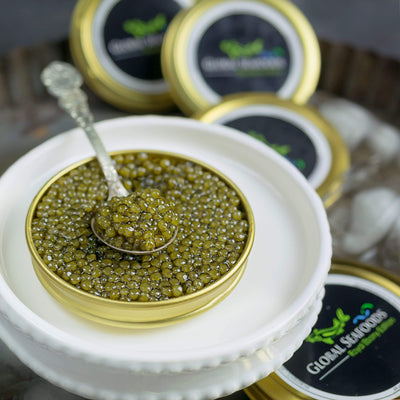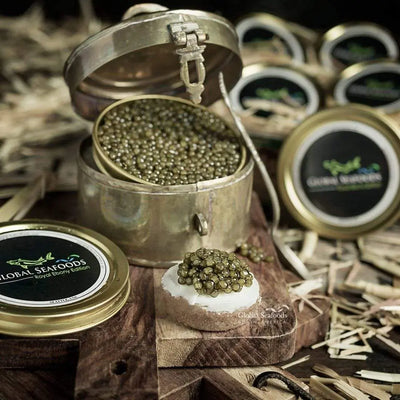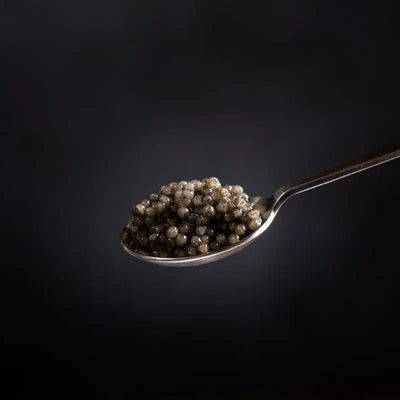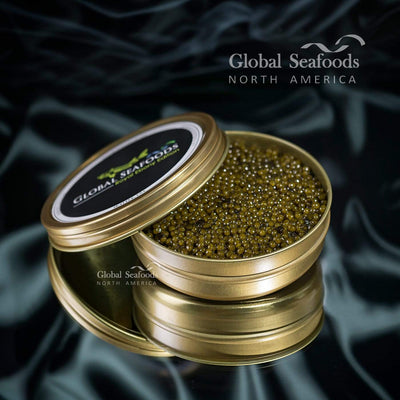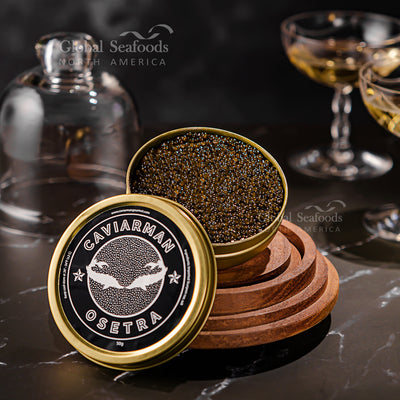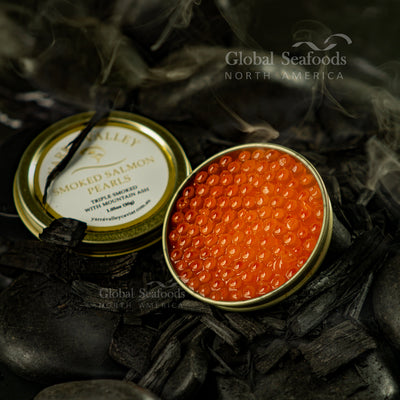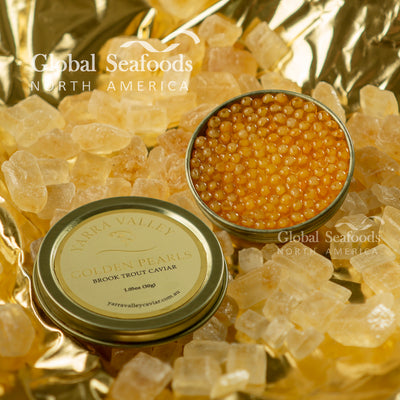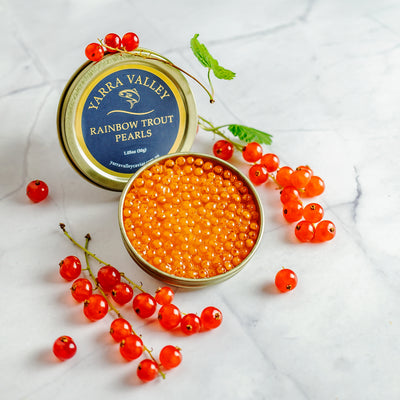+Shop Now
+Categories
- Abalone
- Ahi Tuna
- Alaskan King Crab Legs
- Alaskan Pollock
- Alaskan Sockeye Salmon
- Albacore Tuna
- Anchovy
- Anxiety Relief
- appetizer
- Atlantic Salmon
- Beluga Caviar
- Best Sushi
- black caviar
- black cod
- Blue crabs
- Bluefin Tuna
- Brain Function
- Branzino
- breakfast
- Calamari
- caviar
- Caviar Recipes
- Chef Knives
- Chilean Sea Bass
- Clams
- cocktail caviar
- Cod
- Coho Salmon Caviar
- collagen
- Cooking Methods
- crab
- Crab Balls
- Crab Cakes
- Crab claws
- crab meat
- Crab Recipes
- culinary tips
- decline-sturgeon
- Diver Scallops
- Dover Sole
- Dry Aged Fish
- Dungeness Crab
- Dungeness crab clusters
- Dungeness Crab Legs
- Exotic Shellfish Sampler
- Fish and Seafood
- fish oil
- Fish Sauce
- flat fish
- FLOUNDER FISH
- Focus
- Fresh Seafood Delivery
- Fresh Wild Alaskan Salmon
- Geoduck
- Gooseneck Barnacles
- Gourmet Seafood Platter
- haddock
- halibut
- Halibut Recipes
- hamachi
- Hamachi Recipe
- health
- healthy eating
- Ikura
- Japanese restaurants
- Jonah crab
- Jumbo Sea Scallops
- Kaluga Caviar
- kelp
- king crab
- King Crab Legs
- King Salmon
- kitchen
- Lingcod
- Live King Crab
- Live Lobsters for Sale
- Live Scallops
- Live seafood
- lobster
- Lobster Tail
- luxury food
- mahi mahi
- Marine Collagen
- Mollusk
- Monkfish
- Mussels
- New
- Nutrition
- octopus
- Opah
- Ora King Salmon
- Osetra Caviar
- Ossetra Sturgeon Caviar
- oysters
- Pacific Cod
- Pacific Hake
- Pacific Halibut
- Pacific Ocean
- Pacific Whiting
- Pacific Whiting Recipe
- Paddlefish Caviar
- Petite Oysters
- Petrale Sole
- Poke Tuna
- Pollock
- Pregnancy
- Premium Caviar Selection
- Recipe
- red caviar
- Red Crab
- rock fish
- Rockfish
- Rockfish Recipes
- sablefish
- Sablefish (Black Cod) Recipes
- salmon
- Salmon Caviar
- Salmon lox
- Salmon Poke
- Salmon Recipes
- salmon roe
- Sardines
- Sashimi
- Sashimi-Grade Tuna
- Scallop
- scallops
- Scallops Recipe
- Sea Urchi Recipe
- sea urchin
- Sea Urchin Sushi
- sea weed
- Seafood
- Seafood Dishes
- Seafood Market
- Seafood Recipe
- Seafood Restaurants
- sevruga caviar
- shellfish
- Shrimps & Prawns
- Silver Salmon
- Smoked
- Smoked Salmon
- Smoked Tuna
- Snail Caviar
- Snapper Recipe
- snow crab
- Sole & Flounder Recipes
- Squid
- Steelhead
- Sturgeon Caviar
- Sustainable Seafood Choices
- Swordfish
- Tilapia
- Tilapia Fish
- Tobiko
- Trout
- tuna
- Tuna Recipe
- weathervane scallops
- white fish
- White Sturgeon
- White Sturgeon Caviar
- Whiting Fish
- Wild Caught Shrimp
- Yellowfin Tuna
- Yellowtail snapper
Flying Fish Roe: Flavor, Benefits, and Creative Culinary Uses
January 16, 2025

Flying Fish Roe: A Vibrant Culinary Gem
What Is Flying Fish Roe?
Flying fish roe, commonly known as tobiko, is a prized delicacy in Japanese cuisine. Harvested from flying fish, these tiny, pearl-like eggs are loved for their vibrant colors—ranging from orange and green to red and black—and their distinct, slightly sweet, and briny flavor.
The roe’s unique texture offers a delightful crunch that enhances the eating experience, making it a staple in sushi, sashimi, and other gourmet dishes.
For premium flying fish roe options, explore:
Global Seafoods Flying Fish Roe Collection.
Nutritional Benefits of Flying Fish Roe
Flying fish roe is not just visually appealing; it also packs a nutritional punch. Here's why adding tobiko to your diet can be a smart choice:
Rich in Omega-3 Fatty Acids
Flying fish roe is an excellent source of omega-3 fatty acids, which promote heart health, reduce inflammation, and support brain function.
High in Protein
A single serving of tobiko provides a healthy dose of protein, essential for muscle repair, energy, and overall growth.
Vitamin and Mineral Boost
Flying fish roe contains important vitamins and minerals, including:
- Vitamin B12: Essential for energy production and nerve health.
- Selenium: A powerful antioxidant that supports immunity.
- Iron: Vital for red blood cell production.
Low-Calorie Treat
Despite its rich taste, flying fish roe is relatively low in calories, making it an indulgence you can enjoy guilt-free.
Culinary Uses of Flying Fish Roe
Flying fish roe is a versatile ingredient that can enhance a variety of dishes. Its vibrant colors and unique flavor profile make it a favorite among chefs and home cooks.
1. Sushi and Sashimi
Flying fish roe is a classic sushi topping. Its bold colors and briny taste pair beautifully with sushi rolls, nigiri, or sashimi platters.
2. Gourmet Salads
Sprinkle tobiko over salads for an added crunch and a pop of color. Pair it with greens, seafood, or a light citrus vinaigrette for a refreshing dish.
3. Canapés and Hors D'oeuvres
Create elegant appetizers by spreading cream cheese or avocado on crackers and topping them with flying fish roe. This simple addition elevates any gathering.
4. Pasta and Seafood Dishes
Incorporate tobiko into seafood pasta for a subtle crunch and an extra layer of flavor. It’s also perfect for enhancing risottos or seafood casseroles.
5. Garnish for Drinks
For adventurous mixologists, tobiko can serve as an unexpected garnish for cocktails, adding both texture and visual appeal.
For more roe options, check out:
How to Store Flying Fish Roe
To preserve the freshness and flavor of flying fish roe, follow these storage tips:
- Refrigeration: Keep the roe chilled at 32°F to 39°F (0°C to 4°C).
- Airtight Containers: Store in tightly sealed containers to prevent moisture loss and contamination.
- Freezing: While freezing is possible, it may slightly alter the texture. If you freeze tobiko, use it in cooked dishes rather than as a garnish.
FAQs About Flying Fish Roe
1. What does flying fish roe taste like?
Flying fish roe has a mildly sweet, briny flavor with a satisfying crunch that complements various dishes.
2. Can I eat flying fish roe raw?
Yes, flying fish roe is safe to eat raw and is commonly used as a topping in sushi and sashimi.
3. Are there vegetarian alternatives to tobiko?
Yes, plant-based alternatives made from seaweed or tapioca pearls mimic the texture and appearance of tobiko.
4. How long does flying fish roe last?
When stored properly, flying fish roe can last up to 2 weeks in the refrigerator.
5. Can I use tobiko in desserts?
Although unconventional, tobiko’s unique texture can add an element of surprise to savory-sweet fusion dishes.
For delicious caviar options, visit:
Elevate Your Culinary Creations with Flying Fish Roe
Flying fish roe, or tobiko, is a culinary treasure that brings both visual and flavor appeal to your dishes. Whether you’re preparing sushi for a special occasion, enhancing a seafood pasta, or experimenting with gourmet appetizers, tobiko adds a unique touch that impresses every time.
Get Creative in the Kitchen
From traditional Japanese dishes to innovative fusion recipes, flying fish roe opens up a world of possibilities. Embrace the bold flavors, vibrant colors, and delightful crunch of this exquisite ingredient.
For premium red caviar and roe options, visit:
Explore More with Global Seafoods
Looking for more seafood inspiration? Visit our YouTube Channel for exclusive recipes, pairing ideas, and expert tips!
Related Products
Share:
Also in News

How to Make Sea Bream Sushi With Dry-Aged Tuna & Crab Roll — Step-by-Step With Chef Joshua
December 07, 2025
A complete guide to making Sea Bream sushi at home, including filleting, curing, slicing, and building a Dry-Aged Tuna & Crab sushi roll. Chef Joshua shares professional tips for restaurant-quality results.

Boiled Crab for Game Night: Everything You Need for a Perfect Seafood Party
June 27, 2025
Take your game night to the next level with a Boiled crab party. Learn the best recipes, cooking tips, and hosting hacks for a memorable seafood feast.

Boiled Crab for Date Night: A Romantic Guide to the Perfect Seafood Feast
June 27, 2025
Make your next date night unforgettable with a romantic Boiled crab experience. This guide covers everything you need to know, from ambiance to the best crab varieties.
+Shop Now
+Categories
- Abalone
- Ahi Tuna
- Alaskan King Crab Legs
- Alaskan Pollock
- Alaskan Sockeye Salmon
- Albacore Tuna
- Anchovy
- Anxiety Relief
- appetizer
- Atlantic Salmon
- Beluga Caviar
- Best Sushi
- black caviar
- black cod
- Blue crabs
- Bluefin Tuna
- Brain Function
- Branzino
- breakfast
- Calamari
- caviar
- Caviar Recipes
- Chef Knives
- Chilean Sea Bass
- Clams
- cocktail caviar
- Cod
- Coho Salmon Caviar
- collagen
- Cooking Methods
- crab
- Crab Balls
- Crab Cakes
- Crab claws
- crab meat
- Crab Recipes
- culinary tips
- decline-sturgeon
- Diver Scallops
- Dover Sole
- Dry Aged Fish
- Dungeness Crab
- Dungeness crab clusters
- Dungeness Crab Legs
- Exotic Shellfish Sampler
- Fish and Seafood
- fish oil
- Fish Sauce
- flat fish
- FLOUNDER FISH
- Focus
- Fresh Seafood Delivery
- Fresh Wild Alaskan Salmon
- Geoduck
- Gooseneck Barnacles
- Gourmet Seafood Platter
- haddock
- halibut
- Halibut Recipes
- hamachi
- Hamachi Recipe
- health
- healthy eating
- Ikura
- Japanese restaurants
- Jonah crab
- Jumbo Sea Scallops
- Kaluga Caviar
- kelp
- king crab
- King Crab Legs
- King Salmon
- kitchen
- Lingcod
- Live King Crab
- Live Lobsters for Sale
- Live Scallops
- Live seafood
- lobster
- Lobster Tail
- luxury food
- mahi mahi
- Marine Collagen
- Mollusk
- Monkfish
- Mussels
- New
- Nutrition
- octopus
- Opah
- Ora King Salmon
- Osetra Caviar
- Ossetra Sturgeon Caviar
- oysters
- Pacific Cod
- Pacific Hake
- Pacific Halibut
- Pacific Ocean
- Pacific Whiting
- Pacific Whiting Recipe
- Paddlefish Caviar
- Petite Oysters
- Petrale Sole
- Poke Tuna
- Pollock
- Pregnancy
- Premium Caviar Selection
- Recipe
- red caviar
- Red Crab
- rock fish
- Rockfish
- Rockfish Recipes
- sablefish
- Sablefish (Black Cod) Recipes
- salmon
- Salmon Caviar
- Salmon lox
- Salmon Poke
- Salmon Recipes
- salmon roe
- Sardines
- Sashimi
- Sashimi-Grade Tuna
- Scallop
- scallops
- Scallops Recipe
- Sea Urchi Recipe
- sea urchin
- Sea Urchin Sushi
- sea weed
- Seafood
- Seafood Dishes
- Seafood Market
- Seafood Recipe
- Seafood Restaurants
- sevruga caviar
- shellfish
- Shrimps & Prawns
- Silver Salmon
- Smoked
- Smoked Salmon
- Smoked Tuna
- Snail Caviar
- Snapper Recipe
- snow crab
- Sole & Flounder Recipes
- Squid
- Steelhead
- Sturgeon Caviar
- Sustainable Seafood Choices
- Swordfish
- Tilapia
- Tilapia Fish
- Tobiko
- Trout
- tuna
- Tuna Recipe
- weathervane scallops
- white fish
- White Sturgeon
- White Sturgeon Caviar
- Whiting Fish
- Wild Caught Shrimp
- Yellowfin Tuna
- Yellowtail snapper
Shop Now
Main
News & Updates
Sign up to get the latest on sales, new releases and more…
© 2025 Global Seafoods North America.

